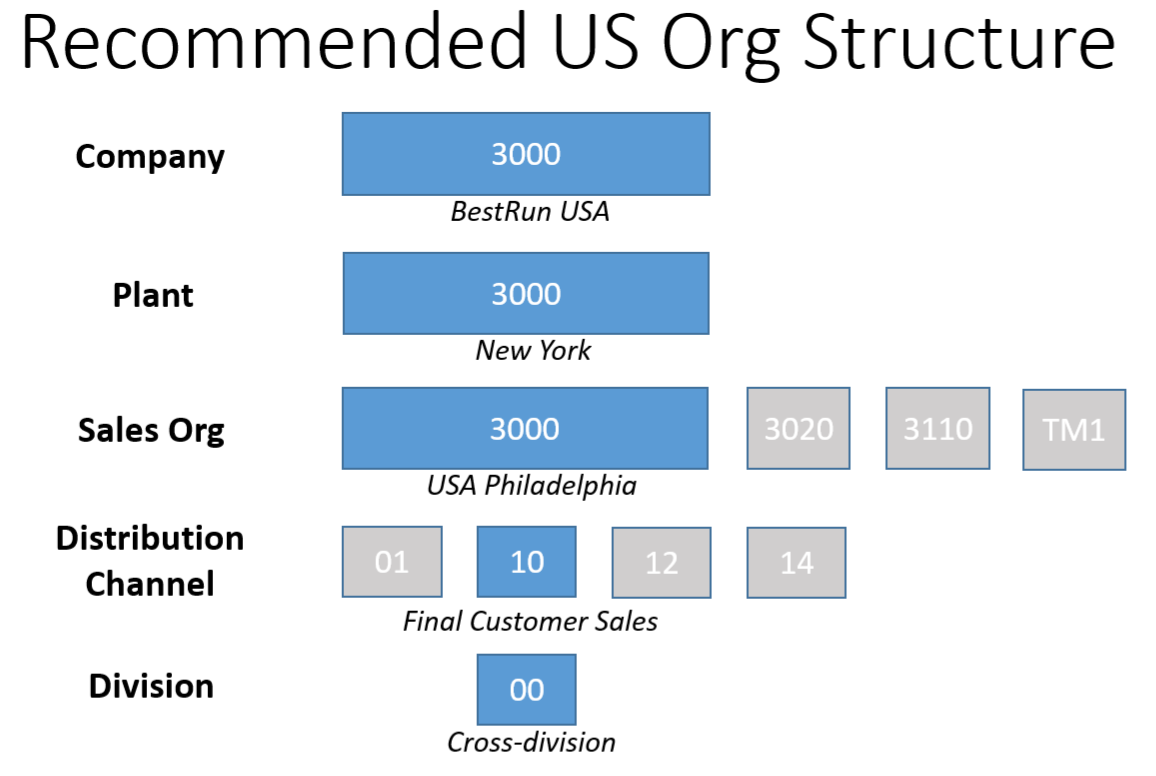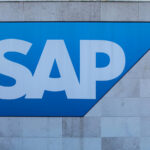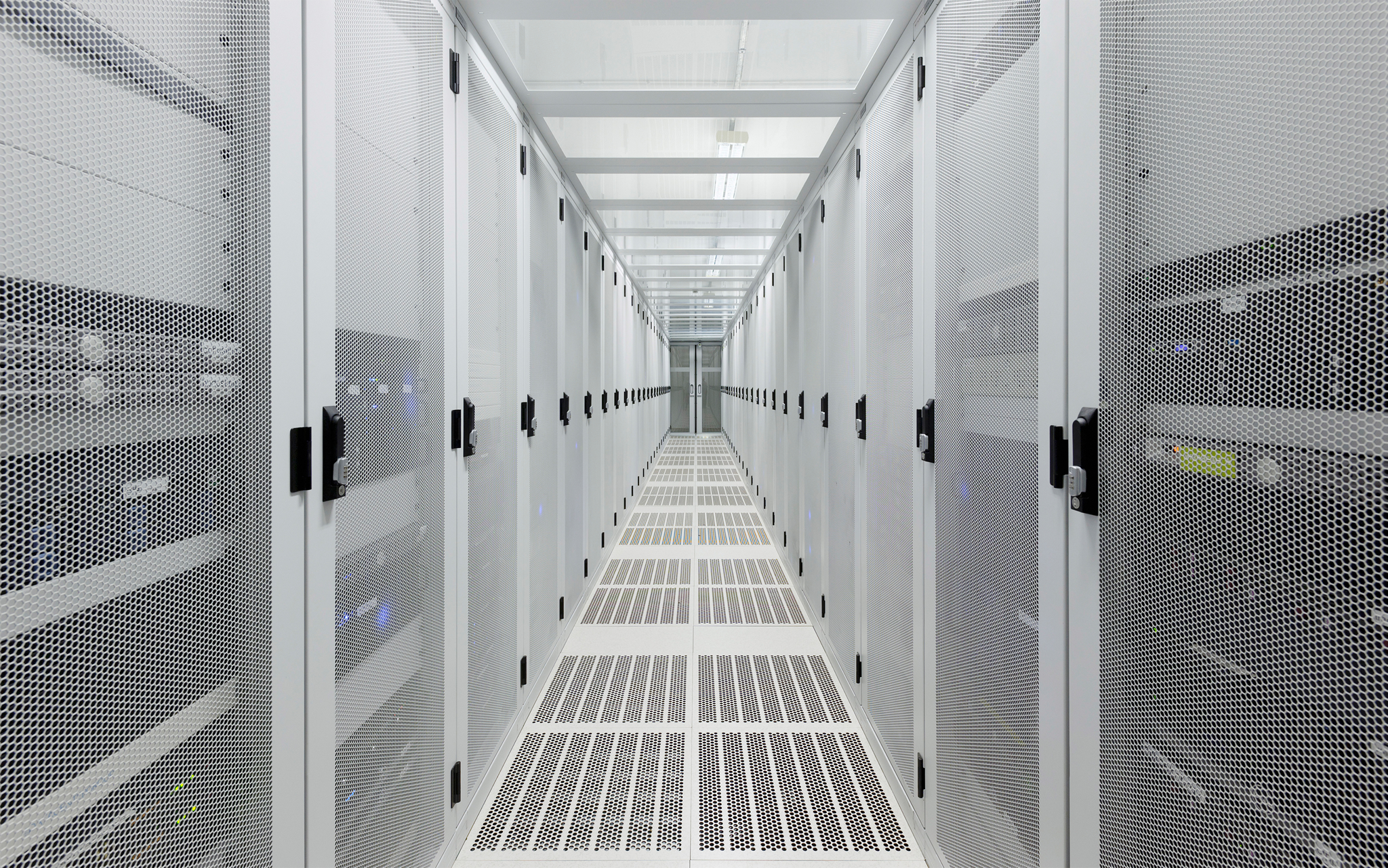I initially intended for this series to conclude after three parts, but some additional topics popped up which I felt justified a 4th installment. This article will be a grab-bag — a potpourri, if you prefer — covering a variety of post-installation thoughts ranging from Windows 10 to common activities you should be aware of. Welcome to the SAP ECC 6.0 IDES Appendix.
SERIES RE-CAP
If you’re just joining this series, I recommend you review the previous articles in which I cover my approach, prerequisites, and initial VM setup (Part 1); VM server preparations (Part 2); and the installation of Oracle and SAP, as well as the first logon (Part 3). The following sections contain separate topics that I wanted to further explore. If you have a suggestion for additional topics, please let me know in the comments.
SAP IDES Clients
When I previously tested my SAP installation, I logged into client 001. However, for day-to-day testing you will probably want to use one of the OTHER clients which exist in your new system. Here is a list of all the clients that exist:
| Client | Name | Description |
| 000 | SAP AG | Accessing this client should be generally avoided unless specifically instructed to do so by SAP. |
| 001 | SAP AG | This can probably be considered the ‘Golden Client’ where development occurs; no data exists here. |
| 066 | early watch | Used for monitoring purposes; can generally be avoided. |
| 800 | IDES-ALE: Central FI Sys | This is the main client where the IDES model is maintained. |
| 810 | IDES-ALE: Sales System | A smaller client with specific ALE examples. See the note referenced below for more info. |
| 811 | IDES-ALE: Production | A smaller client with specific ALE examples. See the note referenced below for more info. |
| 812 | Logistics | A smaller client with specific ALE examples. See the note referenced below for more info. |
At first glance, it appears that client 800 is going to contain the bulk of data and configuration — ideal for day-to-day configuration and testing activities. SAP offers some additional details in SAP Notes. Note 2209434 states, in part:
7. Usage/User
The data of the IDES model company can be found in client 800. The clients 810,811,812 are very small and contain examples for ALE scenarios. In the clients 000/001 you can logon with DDIC and SAP* with the password you have defined at the beginning of the installation as ‘Master-Password’, in the clients 8xx with the password 19920706 / 06071992 and in all clients with IDADMIN / ides The system already contains more than 20 languages. Set the system profile parameter zcsa/installed_languages accordingly to use them.
Now that we know which clients exist, let’s talk about how to access them. The default accounts which you may already be aware of — DDIC, and SAP* — exist in all of the above clients. However, only clients 000 and 001 use the default password you setup during the installation. You’ll want to use the table below to find the pre-defined passwords in your IDES clients:
| Clients | User ID | Password |
| 000/001 | DDIC | [Default during Installation] |
| 000/001 | SAP* | [Default during Installation] |
| 000/001/800/810/811/812 | IDADMIN | ides |
| 800/810/811/812 | DDIC | 19920706 |
| 800/810/811/812 | SAP* | 06071992 |
Now we know the available clients, what they do (roughly) and how to access them. Awesome.
NOTE: You may wish to change the default client to 800 so that you don’t accidentally log on to a different one. There’s a quick guide on how to do this here.
Org Structure
Now that I’ve chosen client 800 as my preferred client, which org structure should I use for configuration and testing? I could, of course, create my own org structure (which I may do at some point). But, there is one that I have used in other IDES systems with great success.

The above structure contains customers and materials for you to use in your configuration and testing. You should be able to use SE16n to find customers (KNVV), materials (MVKE) and Sales documents (VBAK) within this structure.
Licenses
The SAP Note referenced above (Note 2209434) contains a couple of comments about licenses:
-
4. License-/ contract conditions
The installation package is available for free for all customers and partners with a valid license for SAP ERP 6.0 and the specific database. -
8. Post Installation
After the succesful installation of the IDES system you have to install your own license using transaction SLICENSE.
Unfortunately, I cannot speak to IDES licensing intelligently. I don’t know how someone could acquire an IDES license independently from customers and partners. I also cannot speak to whether (or how) the current installation is crippled without updating the license. I am able to log into the system now and create transactions, but I assume that at some point I will not be able to do so.
UPDATE (12/10/15):
An additional note about the license. The ECC 6.0 IDES system is installed with a 3-month temporary license, during which time (it seems) the product is fully functional. As you approach your license expiry date, you will start to see warnings upon system. If you are outside your license validity period (either before or after) you will not be able to log on with a normal system user. If you wish to retain use of your SAP server without the hassle of acquiring a license, here are some thoughts:
- The most convenient way, of course, is to request a new license key from SAP. However, this would require that you have a valid S-number with authorization to make such a request (I do not). IDES keys are available to SAP customers and partners with valid installations of IDES.
- If you’re thinking that an ECC 6.0 license can be hacked in any way, I’ve read that SAP requires the use of an SAP-provided, PGP-encrypted file (their “New License”) which is tied directly to your SAP installation number. I welcome you to correct me if I’m wrong, but I would say that there’s no way to bypass their licensing process.
- From what I can tell, once you install SAP using the default license, you must stay within that 90 day period in order to use the system.
- You can, however, change the server date to consistently remain within that period. This is probably best achieved if you are using SAP within a Virtual Machine. This could pose some problems when dealing with some date-sensitive processes; you obviously don’t want to start a scenario and then have to change the system date during.
- Alternatively, you can create a VirtualBox snapshot just before installing SAP. Every three months when you approach the expiry date, all you have to do is revert back to your snapshot, install SAP and have a fresh box for the next few months. You will of course lose whatever data and configuration you have created. I suppose you could turn on Transports (in SCC1, I think) and store them off-system to make that a bit easier to re-create.
Many of these ideas are not best case scenarios, but they should help you keep your SAP installation around a bit longer. Let me know if you’ve found any alternatives.
Windows 10 and VirtualBox
After my initial draft of these articles, I decided to try updating my host machine to Windows 10. While the update itself worked just fine, it broke my VirtualBox installation. Thankfully, the latest version of VirtualBox (v5.x) seems to run fine under Windows 10. So, if you are using a Windows 10 host machine or plan to upgrade you may want to go ahead and use the latest version of VirtualBox.
HOWEVER, I’m seriously re-considering my decision to use Windows 10. One of the caveats for using Windows 10 is the mandatory installation of Windows 10 updates. It’s not the updates that I mind, but rather the automatic reboots required after most updates are installed. As mentioned in the last article, shutting down and starting up SAP are not trivial activities and I fear some challenges when Windows decides to restart itself without my VM being aware of it. Perhaps the virtualization can handle this type of unexpected shut down; perhaps not. What I will try to do is use the ‘Defer updates’ setting to see if this will reduce the number of updates required. Fingers crossed.
VirtualBox Snapshots
Speaking of VirtualBox, what should we do with all those Snapshots that we made during the installation? The answer is, of course, up to you. I ended up with 3 or 4 separate snapshots during my installation. Since things seem to be working well, I am planning on keeping only two of them: My ‘Squeaky-clean Server’ image for use on other projects, and the one taken just after my first SAP logon. And what I’ll probably end up doing is “cloning” my squeaky clean server to separate it from the SAP VM at which point I can delete the original one.
Hardware
While my aging Dell desktop runs my SAP Server, I’ll be honest: It’s not the fastest thing in the world. The Dell was a good ‘proof of concept’ system, but it is not a machine that I can dedicate to using as a full-time server in the long term. Also, I use this machine for other processor-intensive uses such as music recording and as a workstation for an occasional Adobe Illustrator project. Since this server is something I wish to have available for a while, I decided to move the installation to a beefier system.
I decided to re-purpose a slightly newer, unused Shuttle XPC media center PC as my SAP server. I put a fresh installation of Windows 10 on it and can completely dedicate this to my SAP server project. It also uses a newer Intel i3 processor and has 4 DIMM slots to load up with enough RAM to give you goosebumps. I’ve upgraded its 500 Gb HDD in favor of two 500 Gb SDD’s (solid state drives) to drastically improve read/write speeds, reduce power consumption and lessen noise. It’s quiet enough that I can afford to leave this running all day in the corner of my office without being a distraction. Installing Oracle and SAP on this setup took about 8 hours instead of 12+ on my old box.
Remote Desktop
I travel a decent amount and would like to be able to access my SAP installation while on the road — or while being lazy on the couch. To best accomplish this, you’ll probably want to do a couple of things:
First, you’ll want to make sure that you are leveraging the “Bridged” networking option in your VM configuration on the host machine. What this does is provide your VM with its own IP address. My understanding is that the host machine effectively acts as a router, parsing traffic and routing it to your VM when needed. You can use the ‘ipconfig’ command at the command prompt to find your VM’s IP address.
Next, you need to make sure that you have Remote Access enabled on your VM. From the Start menu, search for ‘Allow Remote Access’. Select the option that says ‘Allow Remote Access to your computer’. A new window will appear. Under the ‘Remote Desktop’ section, select either (a) ‘Allow connections… running any version’, or (b) ‘Allow connections… with Network Level Authentication’. Option (a) being less secure and (b) being more so. Click “OK”. You may get a Firewall message, but that should be switched off anyway.
Next, you’ll want to enable port forwarding on your home router to send Remote Desktop traffic to your VM. How to do this will depend on your router, but you’ll need to log into your router’s front end configuration tool and find the ‘Port Forwarding’ settings. You will need to forward port 3389 to the IP address of your VM. There are guides-a-plenty on how to do this online. Just Bing it.
If you want to access this server from outside your local network and you DON’T have a static IP address you’ll probably want to setup a Dynamic DNS service. If you’re asking yourself “Do I have a static IP address”, then you probably don’t. Your home internet IP address will change periodically, but a Dynamic DNS (DDNS) service will provide you with a domain name you can use and it will automatically map that domain with your current IP address. That way you only have to keep track of your Domain name and not some silly IP address that constantly changes. Make sense? There are several free DDNS services out there. NOIP.com seems to be a popular choice. Here’s roughly what you’ll want to do if you’re new to DDNS:
- Sign up for the free service, create a user name. You’ll probably have to do the whole email address verification thing.
- Choose a domain/host name — something easy to remember. You’ll end up with something like:
YourHostName.no-ip.com
…or…
YourHostName.ddns.net
- Download and install a special app from the DDNS provider (may be called an ‘Update Client’) and install it on your host machine.
- Launch the app and log in with your user id and password.
- That’s about it. The client will periodically send your internet IP address to your DDNS provider and it will be constantly updated.
Finally, you’ll want to launch your Remote Desktop app (there is a native one installed on your PC, or you may want to download it from the Windows Store for a more touch-friendly experience). You should be able to setup a new connection using your full host name. Once connected, you can log in with your Windows user ID and password.
Starting and Stopping Your SAP ECC 6.0 IDES Server
I heartily recommend keeping your server up and running for as long as possible, but there will come a time when you will need to manually take your server down to install updates or bring it back up to recover from a power outage. It happens. I’m still looking into the best way to accomplish these types of activities, but here is what I typically do:
Bringing it down
- Log out of all SAP sessions.
- Within the SAP Management Console, select your system and click the stop button (looks like a square).
- In the resulting pop-up, select the ‘soft’ option to ‘drain’ the instance before stopping it and click ‘OK’. I’ll be honest: I have no idea what this means.
- After a while, you will notice that the system icons have traded their happy green color for a drab gray color. This should indicate that the SAP system is down.
Bringing it up
- After your server is back online, you should first confirm that the ‘Oracle Listener’ service is started. After rebooting, I frequently find that it is not started. To check the listener:
- In the start menu, search for “services”. Select the “Services” option with the gears icon next to it.
- In the services list, find the “OracleOraDB12Home1TNSListener” item.
- If the status is “Started”, you’re good to go. If not, then select it and click the Start/Play button or right-click it and select “Start”.
- Now, launch your SAP Management Console.
- Select your System ID and click the Start/Play button. It may prompt you for a timeout duration — the default should be fine. In a few minutes, you should notice your system is green and ready for action.
This is one of those topics that I don’t have much confidence in. So far, I’ve stopped and started my server numerous times — including times when Windows 10 decides to restart the host machine unexpectedly. If anyone knows of a better way to Start/Stop a standalone SAP server, please let me know in the comments.
NOTE: If this is a dedicated SAP server, you may want to change the Oracle Listener service to start automatically. Just double-click on the service, change the “Startup Type” field to “Automatic”, and click “OK”. The next time the system starts up, it should start the service automatically.
WRAP-UP
Phew! There’s a lot going on with this SAP ECC 6.0 IDES Server thing. Hopefully, this appendix will provide some additional info to help you make the best use of your new server. As always, I’d love to hear feedback if you found some use in this series; please leave a question or comment below. Thanks for reading.










Sadly SAP is way ridiculous regarding training. I’m currently studying Business Information Systems at University and there we have original SAP IDES, but at home I have nothing to practice. How can I get a job regarding SAP if I know very little about it? To learn SAP you must work with SAP. Just ridiculous!
Fortunately I found warez for SAP ECC 6.0 EHP7 and SAP GUI 7.40 Path 7, but, as you said, the default license for it is only 90 days and reusing it is very time-consuming and complicated.
I can understand your frustration. These types of resources are difficult to come by and complicated to install. I completely stumbled into SAP with the guidance of a former manager. The benefit *YOU* have is that you’re not locked into SAP; you can take what you know from your classees and become a successful Oracle or Dynamix consultant. Put finding a job first and the technology second.
Michael ! Thanks to your guide, I successfully installed SAP IDES !
THANKS Michael.
I have succeded installing IDES 6.0 EHP7 with MaxDB using your guide.
Now, I would like to ask if you know how to obtain a development access key. I plan to create some demo scenarios and we need to create some own abap reports.
Thanks Again
Awesome, Efrain. There are ways to obtain access keys. Try googling for a tool called “zapgui”. I have heard that it contains a function for that.
Hello Sir, I have ides ecc 6.0 incl. ehp3 installed on VMWare. I was tryng to use SAP GUI 7.4 which is installed outside VMWare. The only problem is that while using abap editor, keyword suggestion is not working and all code is displayed in black font. If I use gui inside VM, it works fine. Is there any other setting required to use gui outside VMWare?
Thanks for your comment. Unfortunately, I haven’t come across this issue on my own server. I would suggest confirming your patch level for SAP GUI is recent. I know that there are settings within the ABAP screens to select the type of editor, but I am not an expert on that. Good good luck!
One idea for the 90 day licence…
bevor installing SAP IDES change the machine date for example 5 years in future… 06.04.2023
Install IDES and finishing it
Log on at SAP with User ‘IDADMIN’
now you see in the popup the expiration date..
log off..
shut down sap server and services
reset date to today 06.04.2017
restart maschine, start SAP Server
look with SLICENSE for the expiration date… maybe 06.04.2023
i will try it during the next days…
this way worked on old 4.7 SP1 IDES
i dont try it on IDES ECC 6.0
Please, please let me know if this works. I tried playing with dates a little, but found that there is a valid-from and valid-to range. Great idea!
good evening… after a long time and a lot of work i spend time with the IDES again.
changing Date into future or past doesent work anymore. SAP upgraded their license “geraffel”.
Another things possible to check:
1. The server always has the same system date.
valid from and valid to … so we always try to put the date on the same day between valid from and valid to…
howto:
create a Bat file and write the following code:
@echo off
@date 09/30/2018
exit
save the file in the Downloads directory.
Now the date should always be changed at system startup.
Call Task Scheduler and create a task.
every user, highest privileges and at system startup
Now the date is always set to the specific date.
Then the automatic update of the clock / date with a time server on the Internet must be turned off. Term “Internet time”.
With your great guide, I install some IDES machines in the last days. really great instructions … thumbs up … with Virtualbox.
The Virtualbox Client constantly synchronizes the date and time with the host.
That must also be turned off.
In the host (Windows) search the Exe “VBoxManage”.
open a CMD in this directory
then enter the command in the CMD:
VBoxManage setextradata “VBoxInternal / Devices / VMMDev / 0 / Config / GetHostTimeDisabled” “1”
replace with the name of Virtualbox Client and fire …
if you have used this great guide …
, a .vbox file is stored in the directory of the virtualbox.
Display and search for “disable” …
There should be such an entry:
This disables synchonization with the host …
I just got an IDES on a laptop and a few days ago
Virtualbox installed. they are not until the end of Dezenber …
let’s see if that works.
What do you all mean?
Wow! Great ideas, thoughts and insight. Thanks so much for sharing. I’m toying with the idea of updating my guide and will definitely try incorporating these ideas.
Developpment key for Users:
look in the table DEVACCESS for dev keys and take a listed user..
change Password(SU01) of that user and log on
mayby works…
Michael ! Thanks for your guide, and time to explain, I successfully installed SAP IDES and resolved the remote connection problem, let me explain, you should install TeamViewer VPN plugin and it works fine
Michael, thanks for your guide, it is excellent.
I installed my own ECC 6.0 EhP7 IDES a few days ago, and i am trying to activate a user like developer. I try to found the zapgui, but all found versions of the app are not suport my ECC version. Anyone have a solution for that?
No. The only workaround to keeping your SAP IDES system active without an official license from SAP would be to change the server date to be within the validity period.
How can I get SAP ECC. Is it free or paid?
SAP ECC is licensed through SAP. I believe that they like to charge for it.
I initially looked to your guide, which was a very good starting point for me for installing IDES system.
I decided to use MSSQL in newest supported version (2016) and it became trouble maker. So, MSSQL 2016 is supported but it was not that date when EHP7 was released, so some advice that applies to all who install IDES
– use latest available provisioning manager
– use latest supported kernel for release you’re installing. You can check it in SAP PAM, I’ve found that MSSQL 2016 is supported by 7.49 kernel and in fact using any older does not make a sense, despite SAP installer won’t you say that at beginning – you will find nice errors after instlaling- that your DB is not supported by db library… providing right kernel files is about using newer SAPEXE, SAPEXEDB sar files.
and… what makes everything smooth – two SDD disks :). I suceeded with import in about 3hrs on I5 (4 cores), where CPU utilization was reaching 100% most of the time, write speed on DB drive was 100mb/sec in 16 parallel threads.
Thank you very much for sharing your experiences! Your advice here makes a lot of sense. There are so many components involved in an installation like this and they are constantly being updated. Using the latest version is definitely a smart idea. Thanks again for sharing.
i did similar, using windows 16 server dc, oracle 12.1 (12.c) and EHP7 Ides with SWMP 1.0 sp 09. my hardware is a i7-4500u, 8gb ram, ssd, i dedicated the 4 cores, 12 parallel jobs and everything went out smoothly as well. it was under 6 hours for the installation to occur. there was one error with SQL file list, all i needed to do is to remove the references of not existent files, leaving only DFACT.sql listed. thank you for the tutorial!
Gabriel, Thank you for your contribution. I had not come across that specific error message. I’m glad you were able to find a solution; thank you very much for posting it here for others to see. -Michael
Hi Michael.
In September 2016 I installed an ECC 6.0 EHP7 / Maxdb database using your guide and I succeded even that I am not a technical guy (I wrote a comment in this blog then)
The system is working fine and I have configured several business scenarios during this time.
In order to solve the expiration problem I reset the system date every time it reaches the end date but now i would like to do a new installation in order to have a fresh date.
My plan is to do an export of the current system and then during the new installation use that export instead of the original media.
Do you think I can use your guide to do this just changing some steps in order to use my own export?
Best regards and thanks in advance.
Thank you for commenting, Efrain. I’m excited that you were able to get your system up and running. I, too, am tired of changing my system date constantly in order to keep my IDES system available. I like your idea of exporting your current system and then restoring it. My concern would be that you would be backing up your licensing information. If that is the case, your restoration would not help. However, if you were able to do a NEW installation using just your data, then that would have a chance. I don’t know if my guide would be useful for this application and, unfortunately, I don’t have the time to test this out. If you give it a shot, please report back. That may be worth writing a follow-up article. Best of luck!
Hi again,
I am not pretending to avoid license expiration but at least I will have a fresh date (2018 instead 2016).
I am a little bit worried about a system crash if we continue reseting the system date because the time stamp used for internal process may get duplicated, that is the main reason for attempting a new installation but not loosing the work done so far.
I will let you know how it goes.
Best regards
If you are customizing and want to save it for later:
Normally only local transport orders work: $TMP
These can not be released or transported.
following solution:
1. a transport layer must be created.
– Client 000 with DDIC User
– Transaction STMS
– a pop-up “configure Transport Domain” -> click save
– Password query with the login password of DDIC
As a result: “You are logged onto the domain controller”
2. Click on the System Overview button in the STMS
– Overview Systems
– SAP System -> Create Virtual Machine
– System “RAM” Description “Transport Goal” -> click SAVE
3. back to STMS and click transport routes
– click graphical editor
– change to change mode
– One click on RAM and position in the free window
– one click on ROM and in the free window position in front of the RAM
– click on Add Transport Route -> a pen is displayed
– connect ROM with RAM
– in the pop-up then select Consolidation and the layer “ZECW”
-click save and distribute and always say yes …
Test of the transport route:
IDES Mandt 800
– SE01
– create an new customizing request
– Short description
– RAM should be in the Target field
– Save click …
the transport and the task are displayed now …
– doubleclick on the task and then release
– “Message: Task ROMK90000xx has been released to request ROMK90000xx”
– Highlight the transport and click and release
Now 2 files are written in the file directory of the SAP installation.
1. File (a kind of administration file)
example D: \ usr \ sap \ trans \ cofiles example: K900004.ROM
2. the data package:
example D: \ usr \ sap \ trans \ data example: R900004.ROM
there must always be 2 files …
These 2 files / directories can be copied away and imported for later
further use.
Is possibly interesting, if the license period threatens to expire …
First release the shipments, save them and import them into the next installation …
Import:
Copy the files to the directories … maybe the rights in the file properties have to be shared with everyone …
The transport layer must be set as described above
– Client 800
– STMS
– double-click on the system where you want to import.
– The import queue may be empty
– Extras -> Other Request -> Add
– Call up F4 and select the file
– Add the Transport to Queue -> YES
– mark the transport and then import it by truck
(Import request button and not import all requests button)
Happy customizing…